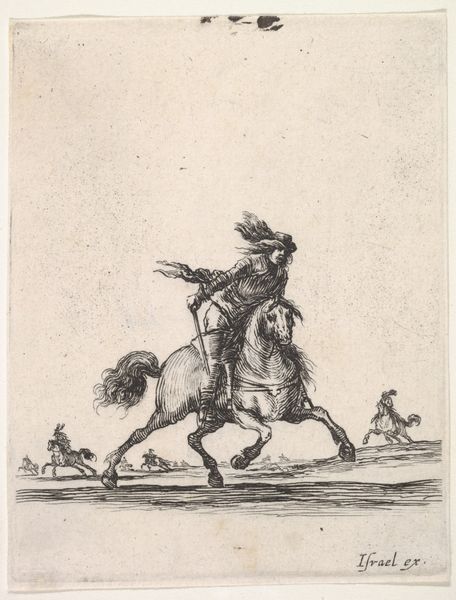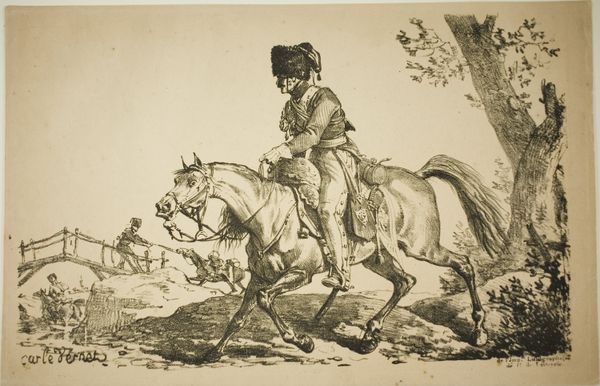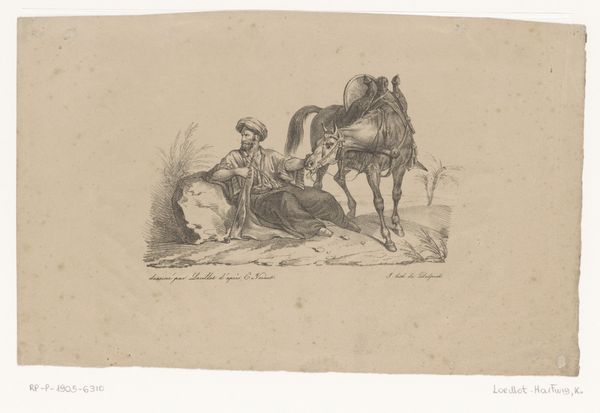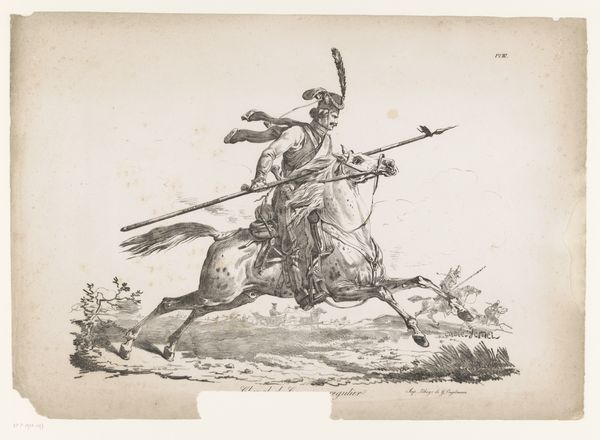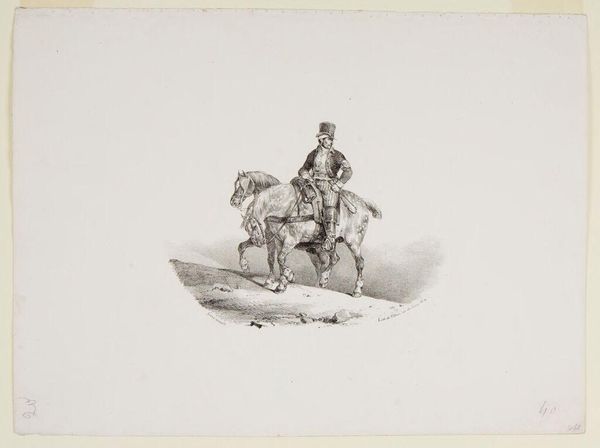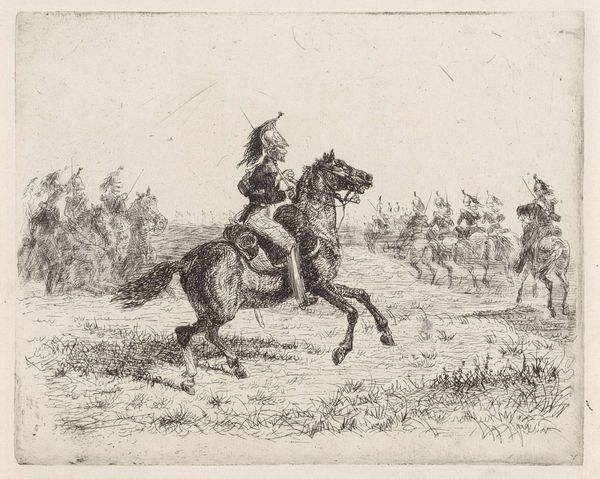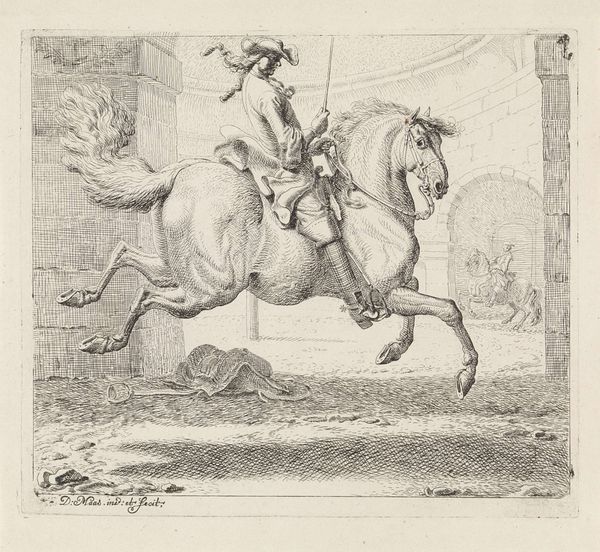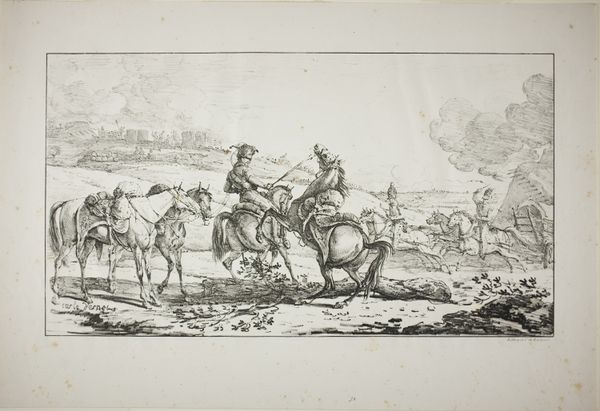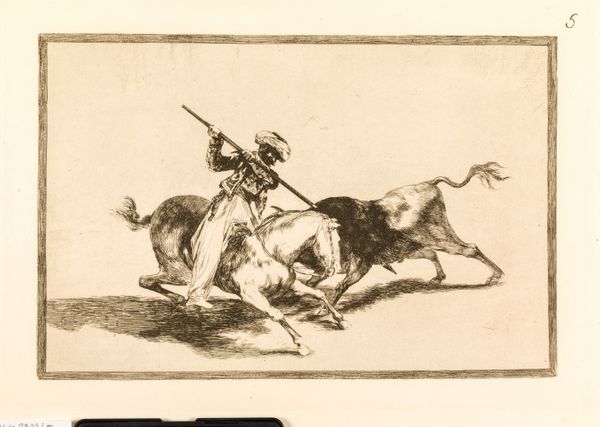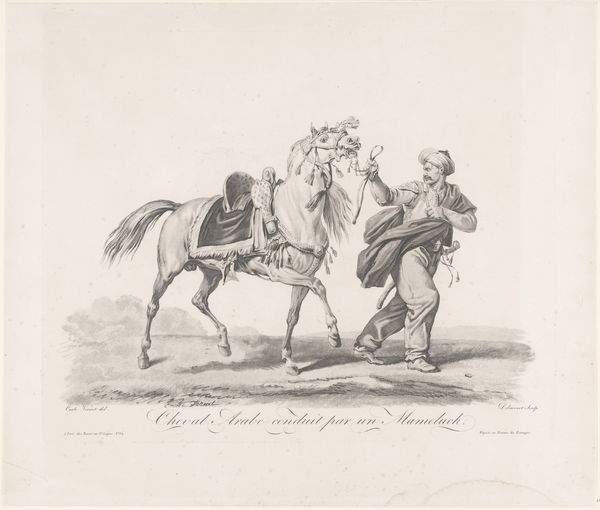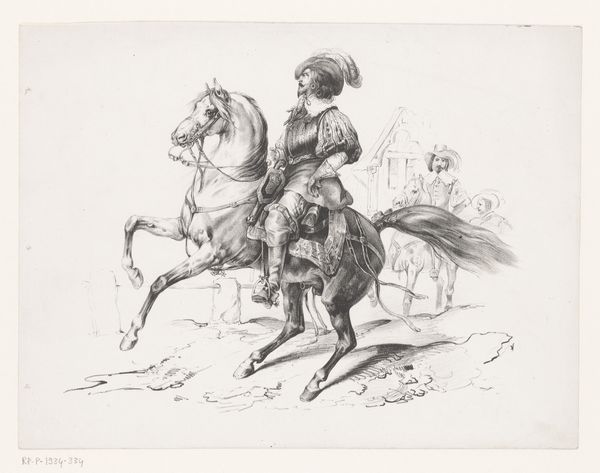
drawing, lithograph, print, paper, ink, pencil
#
portrait
#
drawing
#
ink drawing
#
lithograph
# print
#
pen sketch
#
pencil sketch
#
figuration
#
paper
#
ink
#
romanticism
#
pencil
#
line
#
genre-painting
Dimensions: 195 × 295 mm (image); 283 × 424 mm (sheet)
Copyright: Public Domain
Curator: This spirited lithograph, “Hussard Galloping,” was created around 1817 by Carle Vernet, a prominent French artist. It’s currently housed here at The Art Institute of Chicago. Editor: My immediate impression is pure dynamism. The ink strokes convey incredible energy—the horse seems to burst right out of the frame, its rider, with such a bold figure, must have deep psychological and historical relevance. Curator: Absolutely. Vernet came from a family of renowned artists. He gained fame depicting military life during the Napoleonic era. Hussars, like this one, were light cavalrymen, known for their daring raids and flamboyant uniforms. Their imagery quickly permeated society at the time. Editor: Notice the detail given to the hussar’s uniform. It’s more than just fabric; the braiding, the tassels – they signify status, prowess, and cultural identity, linking him to a rich historical narrative and reflecting the period's infatuation with military glory. Is this image potentially indicative of Napoleon's attempts to maintain control over civic life? Curator: Indeed. The Romantics were drawn to scenes of heroism, and military figures served as symbols of national pride during that period. The hussar here isn’t just a soldier; he embodies courage, patriotism, and even a bit of romantic rebellion against societal norms. I feel this particular individual’s depiction attempts to show the Napoleonic view of control in an otherwise disheveled manner. Editor: But let's consider how Vernet's composition enhances the emotional impact. The diagonal thrust of the horse and rider, the fluttering cape, they amplify the sense of urgency and forward motion, creating a powerful image of man and beast united in purpose. He’s brandishing his hat with such glee and the background cavalry appear somewhat haphazard. Perhaps they reflect an illusion of civic unity. Curator: And there's a deliberate ambiguity at play. Is he riding into battle, or is he simply parading? Vernet leaves that open to interpretation, allowing viewers to project their own meanings onto the scene. He may even be galloping away. The symbol of a man who embodies Romantic principles in isolation from the military might reflect a societal disenchantment towards warfare. Editor: I’m drawn to the cultural resonance that continues to echo from it even now. Curator: Agreed. This Hussar remains a potent symbol, reminding us of the complex interplay between war, society, and artistic expression in early 19th-century France.
Comments
No comments
Be the first to comment and join the conversation on the ultimate creative platform.
